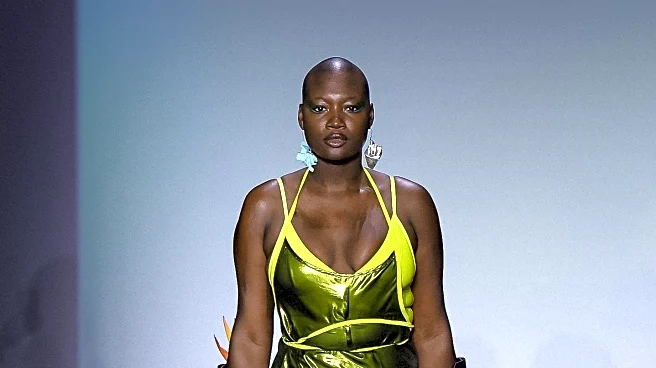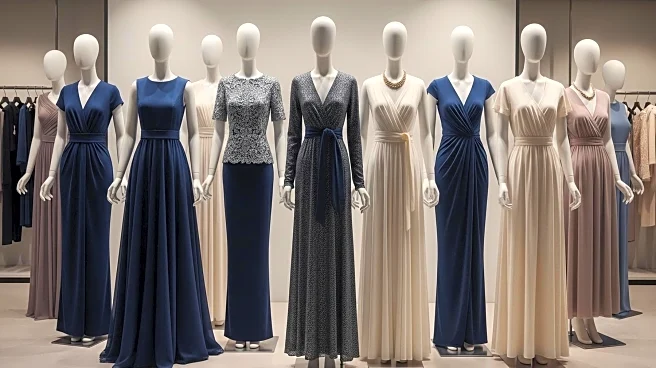What's Happening?
The fashion industry is increasingly prioritizing inclusivity, with major fashion houses and events showcasing adaptive collections and luxury plus-size couture. This shift reflects a broader representation of diverse body types, genders, ethnicities, ages, and abilities. Brands are incorporating design elements such as magnetic closures, adjustable hems, and sensory-friendly fabrics into mainstream collections, making fashion more accessible to all. This movement is not only about selling clothes but also about recognition and belonging, as consumers see themselves represented in fashion.
Why It's Important?
The push for inclusivity in fashion is significant as it opens doors to large, underserved markets, increasing brand loyalty and expanding reach. By catering to diverse needs, brands can strengthen long-term growth and innovation. Inclusivity drives creativity, encouraging experimentation with smart textiles and AI-powered customization. This transformation benefits brands, consumers, and society by making fashion a tool for empowerment and social change. The industry’s shift towards inclusivity is influencing other sectors, proving that when one industry leads with inclusion, others follow.
What's Next?
As the momentum for inclusive fashion builds, more brands are expected to embrace this trend, responding to consumer demand for representation. This could lead to further innovation in design and marketing strategies, influencing industry standards. The ripple effect of inclusive fashion may extend beyond clothing, impacting supply chains and other industries such as beauty and technology. The future of fashion looks set to focus on authentic self-expression rather than conformity, reshaping how individuals perceive themselves and each other.
Beyond the Headlines
Inclusive fashion is not just a business decision but a movement reshaping cultural dialogue. Designers who embrace diverse audiences create clothing that celebrates cultural exchange and individuality, leading to more imaginative fashion that resonates globally. This transformation is creating a domino effect, influencing entire supply chains and marketing strategies, and setting new industry standards. The lessons from fashion’s inclusive transformation are being applied across various sectors, highlighting the broader impact of inclusivity.










